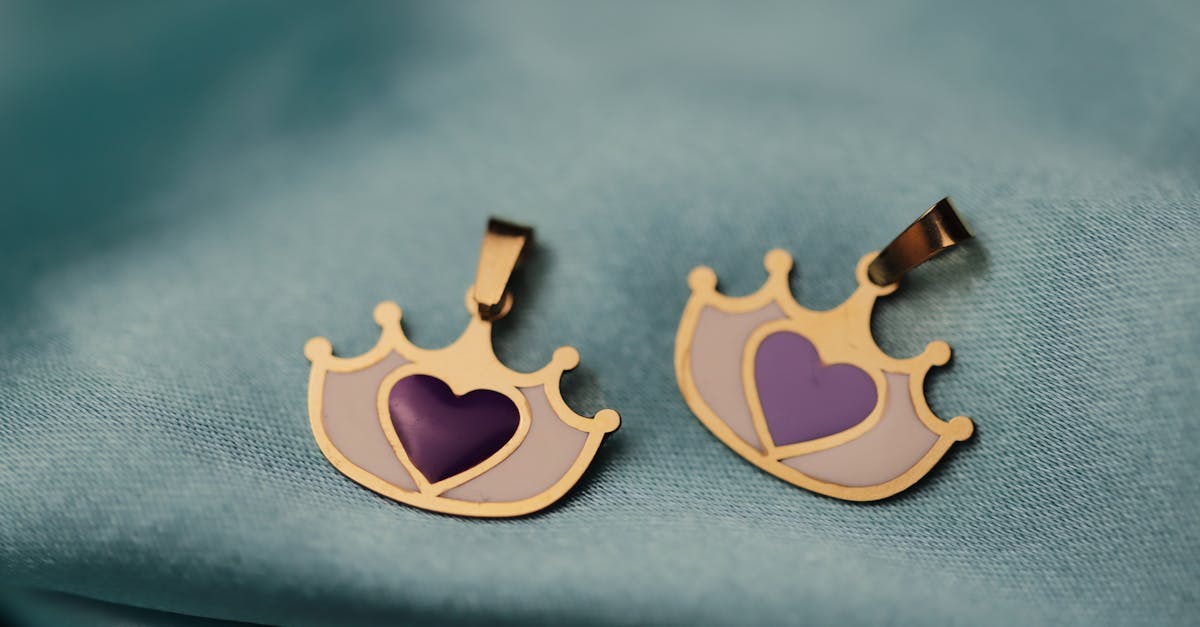Gold’s Enduring Legacy in Dentistry: A Timeless Allure

Dental Applications of Gold: Enhancing Oral Health with Precious Metal
‘Smile With Confidence: Gold’s Enchanting Journey in Dentistry’
Gold, a symbol of wealth and status, has found its way into the realm of dentistry, offering an exquisite blend of artistry and science. With its remarkable biocompatibility and longevity, gold has become a preferred choice for dental restorations, promising a radiant smile that radiates health and elegance.
In this comprehensive guide, we embark on an illuminating journey into the dental applications of gold. From its role in crowns and fillings to its presence in bridges and orthodontic appliances, gold’s versatility and effectiveness will captivate you. Prepare to be amazed as we unveil the hidden treasures of this precious metal, transforming smiles into masterpieces of oral health.
Key Insights
- Keypoint 1: Gold is an ideal material for dental applications due to its biocompatibility, inert nature, and resistance to corrosion and wear.
- Keypoint 2: Gold alloys are used to enhance gold’s properties for specific dental applications, such as increased strength or durability.
- Keypoint 3: Gold crowns and bridges offer exceptional durability and longevity, restoring damaged teeth and replacing missing teeth effectively.
- Keypoint 4: Gold inlays and onlays provide a conservative approach to restoring teeth, preserving maximum natural tooth structure while ensuring strength and durability.
- Keypoint 5: Beyond restorations, gold has additional applications in dentistry, including orthodontic appliances and anti-inflammatory treatments.
1. Gold’s Biocompatibility: Nature’s Gift for Dentistry
Gold’s Biocompatibility: Nature’s Gift for Dentistry
When it comes to dental materials, biocompatibility reigns supreme. Gold, with its innate inert nature, stands out as a champion in this regard. Its lack of toxicity and exceptional compatibility with human tissue make it an ideal choice for dental applications.
Unlike some other dental materials, gold does not trigger allergic reactions or inflammation in the oral cavity. Its bioinert properties ensure that it peacefully coexists with your body, causing no harm or irritation. This makes gold particularly suitable for individuals with sensitive mouths or metal allergies.
Furthermore, gold’s resistance to corrosion and tarnishing adds to its biocompatibility. It can withstand the harsh environment of the mouth, maintaining its integrity and functionality over time. No wonder gold has earned its place as a trusted material for dental restorations, offering long-lasting performance without compromising your oral health.
2. Gold Alloys: The Secret to Durability and Strength

Gold Alloys: The Secret to Durability and Strength
Pure gold, while possessing remarkable biocompatibility, may not always meet the demands of dentistry’s diverse needs. To enhance its durability and strength, gold is often alloyed with other metals, creating a harmonious blend that optimizes its properties.
These gold alloys come in various compositions, each tailored to specific dental applications. Some common alloying metals include copper, silver, platinum, and palladium. By carefully adjusting the proportions of these elements, dentists can fine-tune the alloy’s hardness, strength, and color to suit the requirements of different restorations.
For instance, higher carat gold alloys (e.g., 22k or 24k) offer superior biocompatibility and corrosion resistance, making them ideal for crowns and bridges that require excellent aesthetics and longevity. On the other hand, lower carat gold alloys (e.g., 10k or 14k) have increased strength and durability, making them suitable for fillings and other applications where resilience is paramount.
3. Crowns of Gold: Restoring Damaged Teeth with Precision
Crowns of Gold: Restoring Damaged Teeth with Precision
When a tooth sustains significant damage, a crown may be the knight in shining armor that comes to its rescue. A gold crown is a custom-crafted cap that fits over the damaged tooth, restoring its strength, functionality, and aesthetics.
Gold crowns have stood the test of time, earning a reputation for their exceptional durability and longevity. Their ability to withstand the forces of biting and chewing makes them ideal for restoring molars and other back teeth that bear the brunt of these forces. Additionally, gold’s resistance to corrosion and wear ensures that your crown will maintain its integrity for many years to come.
Beyond their durability, gold crowns offer an aesthetically pleasing solution for damaged teeth. Their natural golden hue can be customized to match the shade of your surrounding teeth, ensuring a seamless and discreet restoration. With a gold crown, you can smile confidently, knowing that your smile’s beauty and health are fully restored.
4. Fillings of Gold: Long-Lasting Solutions for Cavities

Fillings of Gold: Long-Lasting Solutions for Cavities
When tooth decay strikes, a filling is often the trusty ally that comes to the rescue, sealing off the affected area and preventing further damage. Gold fillings, in particular, have earned a reputation for their exceptional durability and longevity.
Unlike some other filling materials, gold is highly resistant to wear and tear. It can withstand the constant friction and pressure of chewing, ensuring that your filling remains intact and effective for many years to come. Additionally, gold’s inert nature makes it impervious to decay, preventing the formation of new cavities around the filling.
With a gold filling, you can enjoy peace of mind, knowing that your restoration is built to last. Its exceptional durability means fewer trips to the dentist for repairs or replacements, saving you both time and money in the long run.
5. Gold Inlays and Onlays: A Conservative Approach to Restorations
Gold Inlays and Onlays: A Conservative Approach to Restorations
When tooth damage is more extensive than a simple filling can address, yet not severe enough to warrant a full crown, gold inlays and onlays offer a conservative and effective solution. These custom-crafted restorations are designed to fit precisely within the contours of the damaged tooth, preserving as much of the natural tooth structure as possible.
Gold inlays are used to restore the biting surface of a tooth, while gold onlays extend to cover one or more cusps (the pointed projections on the chewing surface). By utilizing gold’s strength and durability, these restorations can withstand the forces of chewing and protect the tooth from further damage.
In addition to their functional benefits, gold inlays and onlays also offer aesthetic appeal. Their natural golden hue can be customized to match the shade of your surrounding teeth, resulting in a seamless restoration that blends harmoniously with your smile.
6. Gold’s Role in Dental Bridges: Connecting Smiles
Gold’s Role in Dental Bridges: Connecting Smiles
When one or more teeth go missing, a dental bridge steps up to fill the gap and restore your smile’s functionality and aesthetics. Gold plays a vital role in crafting these bridges, providing a strong and durable foundation for the replacement teeth.
Gold’s exceptional strength makes it an ideal material for the framework of a dental bridge. This framework supports the artificial teeth (pontics) and anchors them firmly to the adjacent teeth. Gold’s resistance to corrosion and wear ensures that the bridge can withstand the forces of biting and chewing, maintaining its integrity for many years to come.
In addition to its strength and durability, gold also offers biocompatibility and aesthetic appeal. It is well-tolerated by the body, reducing the risk of allergic reactions or gum irritation. Furthermore, gold’s natural golden hue can be customized to match the color of your surrounding teeth, resulting in a seamless and natural-looking restoration.
7. Beyond Restorations: Gold’s Additional Dental Applications
Beyond Restorations: Gold’s Additional Dental Applications
Gold’s versatility extends beyond its use in dental restorations. This precious metal plays a multifaceted role in various other dental applications, each harnessing its unique properties for the benefit of oral health.
One notable application of gold in dentistry is in orthodontic appliances. Gold’s strength and flexibility make it an ideal material for crafting orthodontic wires and brackets. These appliances gently guide teeth into their desired positions, creating a more harmonious and aesthetically pleasing smile.
Additionally, gold’s anti-inflammatory properties have therapeutic applications in dentistry. Colloidal gold, a solution of gold nanoparticles, has shown promise in reducing inflammation and pain associated with gum disease and other oral conditions. Its anti-bacterial properties may also contribute to improved oral hygiene and overall dental health.
Is gold safe to use in dental applications?
Yes, gold is considered safe for use in dentistry due to its biocompatibility. It is generally well-tolerated by the body, with a low risk of allergic reactions or tissue irritation.
How long do gold dental restorations typically last?
Gold dental restorations are known for their exceptional durability and longevity. With proper care and maintenance, they can last for many years, often outlasting other types of dental restorations.
Is it expensive to get gold dental restorations?
Gold is a valuable metal, so gold dental restorations tend to be more expensive compared to restorations made from other materials. However, their durability and longevity often make them a worthwhile investment in the long run.
Can gold dental restorations affect the appearance of my smile?
Gold has a distinct golden hue, which may be noticeable in some types of dental restorations, such as crowns or bridges. However, advances in dental techniques and materials have made it possible to customize the color of gold restorations to better match the surrounding teeth, ensuring a more natural-looking smile.
Are there any alternatives to gold for dental restorations?
Yes, there are several alternative materials used in dental restorations, including porcelain, zirconia, and composite resin. The choice of material depends on factors such as the location and extent of the restoration, as well as the patient’s individual preferences and budget.
Table of Key Insights
| Key Insight | Description | |—|—| | Gold’s Biocompatibility | Due to its inert nature and lack of toxicity, gold is an ideal material for dental applications, minimizing allergic reactions and ensuring compatibility with oral tissues. | | Gold Alloys | By combining gold with other metals, gold alloys are created to enhance specific properties, such as strength and durability, for different dental applications. | | Durable Restorations | Gold crowns, bridges, inlays, and onlays offer exceptional durability and longevity, providing reliable and long-lasting solutions for restoring damaged teeth and replacing missing teeth. | | Conservative Approach | Gold inlays and onlays preserve maximum natural tooth structure while restoring damaged areas, offering a conservative and effective treatment option. | | Versatile Applications | Beyond restorations, gold has diverse applications in dentistry, including orthodontic appliances and anti-inflammatory treatments, demonstrating its versatility and value in oral healthcare. |

0 responses to “Dental Applications of Gold: Enhancing Oral Health with Precious Metal”